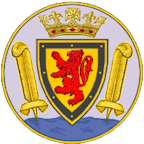1800s Descriptions
The Penny Cyclopedia
Saltash is on the right bank of the Tamar, a little above its junction with the Lynher, and is in the parish of St. Stephens. The town is built on the ascent of a steep hill, the summit of which is crowned by the chapel of ease and the town or mayoralty hall, beneath which is an open market-place. The streets are narrow and indifferently built; the principal street is at right angles to the river; the buildings are chiefly of stone quarried in the rock on which the town stands. Saltash appears to have been of more consequence formerly than at present: it is now chiefly inhabited by fishermen. Some trade is carried on in malt. The number of houses in 1831 was 245; of inhabitants 1,637. The rest of the parish, which is tolerably large, contained at the same time 280 houses and 1,455 inhabitants. The market is on Saturday. Besides the chapel of ease, there are two dissenting meeting-houses, if not more, and a free school. The perpetual curacy of Saltash is worth £45 per annum, with a parsonage house; the living of St. Stephens is a vicarage, of the net value of £139 per annum, is in the diocese of Exeter and archdeaconry of Cornwall.
Imperial Gazetteer of England and Wales
SALTASH, a town, a chapelry, and a sub-district, in St. Germans district, Cornwall. The town stands on the estuary of the Tamar, at the W end of Albert bridge, and at the junction of the South Devon, the Cornwall, and the Saltash and Callington railways, 3 miles N W by N of Devonport; was anciently a place of much importance, but went into decline; is governed, under a charter of George III., by a mayor, a recorder, and six aldermen; under-went revival at the railway epoch, in connexion with the building and the opening of Albert bridge; has, since that time, undergone much improvement and extension; consists partly of old streets, picturesquely grouped on the steep acclivities of a rocky eminence, partly of new streets, on a new site, at Port-View; carries on malting, fishing, and a coasting trade; and has a head post-office, designated Saltash, Cornwall, a [railway] station with telegraph, a hotel, an old town hall built on pillars, a mechanics' institute with library, an ancient church with massive tower, a Baptist chapel in the early English style built in 1866, a Wesleyan chapel, national schools, charities £21, markets on Tuesdays and Saturdays, great markets on the Tuesdays before quarter days, and cattle fairs on 2 Feb. and 25 July. The chapelry is regarded as conterminate with the town, and is in the parish of St. Stephen- by-Saltash. Real property: £3,759. Population: in 1851, 1,621; in 1861: 1,900. Houses: 275. The living is a [perpetual] curacy in the diocese of Exeter. Value, £100. Patrons, the Executors of Sir R. S. Hawks. "The sub-district contains all St. Stephen parish, and six other parishes. Acres: 24,464. Population: 6,240. Houses: 1,189.
The Borough of Saltash
The situation of the Borough on the Southern side of a promontory is excellent for all purposes except the securing of a water supply. The houses rise one above another from the banks of the Tamar to a high point at Longstone, 261 feet above the level of the sea, and it is difficult to find a water source with sufficient quantity at any point in the locality high enough for water to be brought over Longstone by gravitation.
Almost every part of the town offers magnificent views for a radius of many miles, extending on the South over all the Hamoaze, the chief anchorage of Britain's best bulwarks; ancient training ships and modern ironclads being there seen floating idly on the waters, while over the towers, spires, and chimneys of the Three Town, Plymouth Sound and Breakwater are visible with Staddon heights and the Mewstone on the left, and the picturesque woods and glades of Mount Edgcumbe on the right, the whole displaying to the eye a lovely combination of art and nature. Yet there are likewise on the Eastern side river and moorland views of great expanse, embracing a lake as fine as any sheet of water of its kind in the Kingdom which is formed by the Tamar upon its junction with the Tavy near Warleigh — the seat of the Radcliffes — beyond which we see Maristow (Sir Massey Lopes, Bart.) and the ancient mansions Buckland Abbey and Walreddon Manor backed along the whole Eastern horizon by the wild vales and Tors of Dartmoor; Cocks Tor, Peu Tor, Mis Tor, and Brentor capped by its Lilliputian church being chiefly conspicuous. Again on the North over the woods of Pentillie and moors of Viverden stands the granite height Kitt Hill on Hingston Down at an altitude of 1067 feet. From Longstone can also be seen the churches of Landulph, St. Stephens, and Landrake which has the highest tower but one in the county and is said to be only three barley corns below Probus tower the loftiest.
A Book of Cornwall
Saltash occupies the steep slope of the hill that descends to the water's edge. The main street is as steep as the side of a roof. In it on each side are the remains of very ancient houses that were once those of merchants of substance and corporators exercising almost despotic power in the little town. Old windows, carved doorways, and even, when these have disappeared, panelled rooms and handsome plaster ceilings, proclaim at once antiquity and wealth. There is much of interest remaining in Saltash. Not only are there in it still many ancient houses, but several of the ancient families that were burgage tenants hundreds of years ago are still represented there.
page updated 2025-03-21
